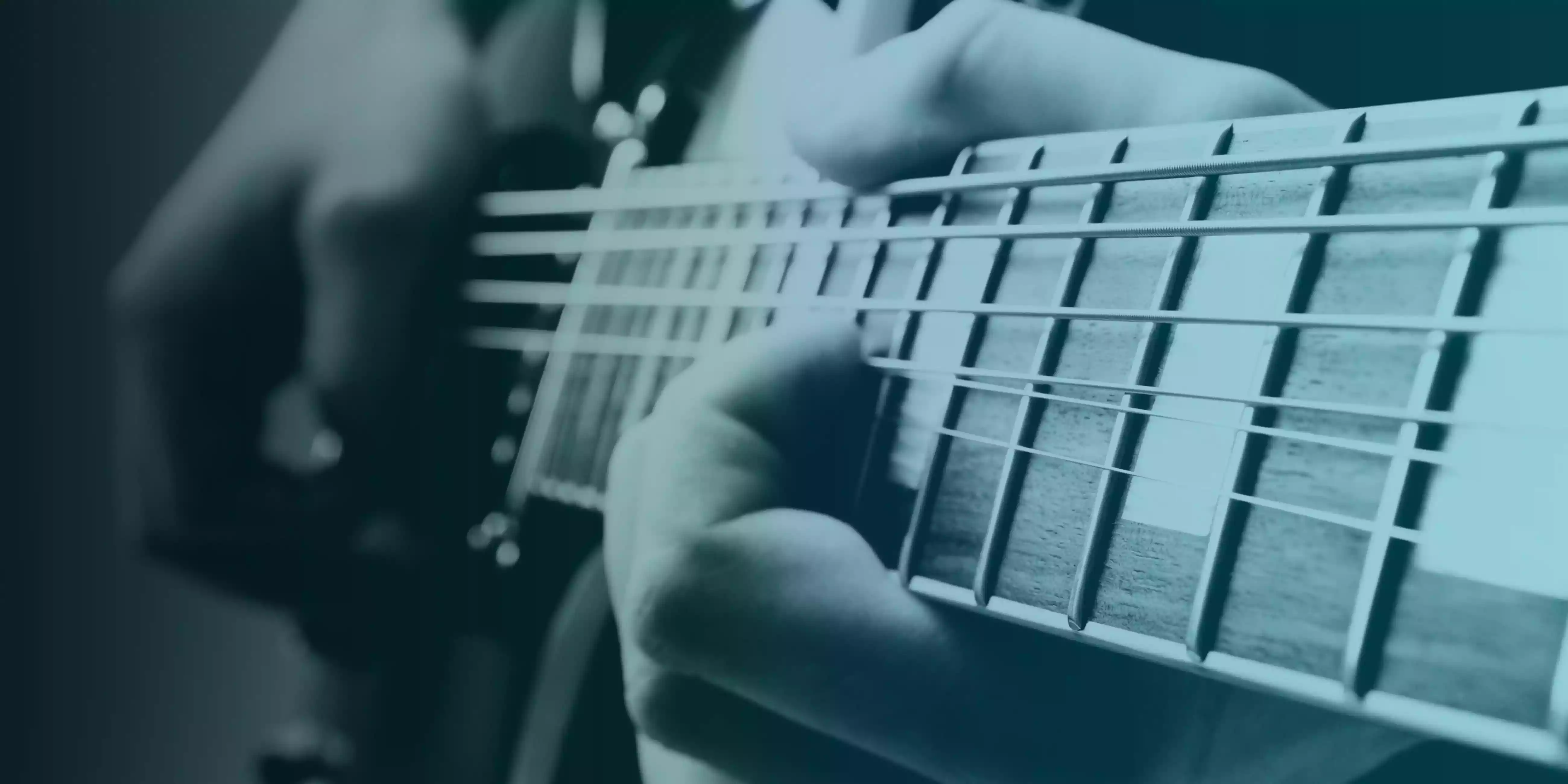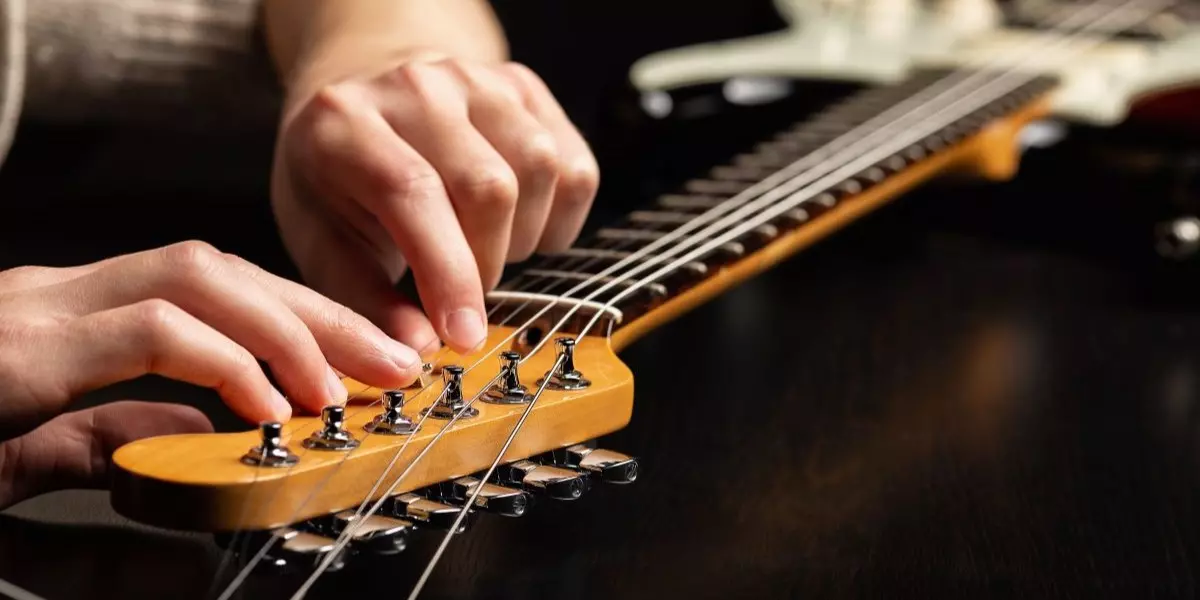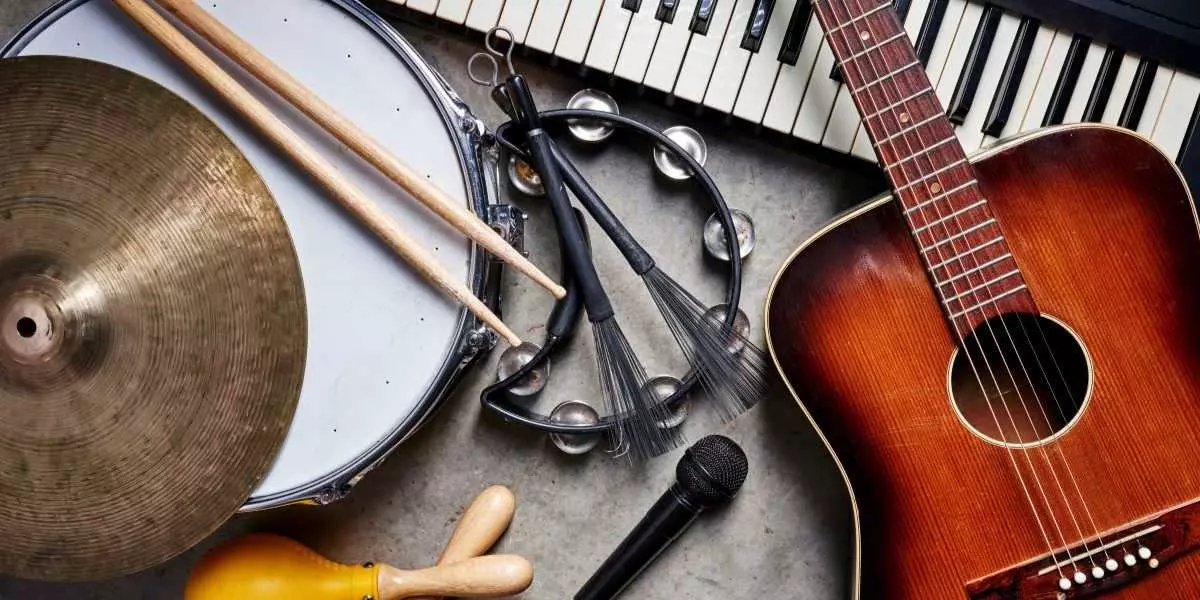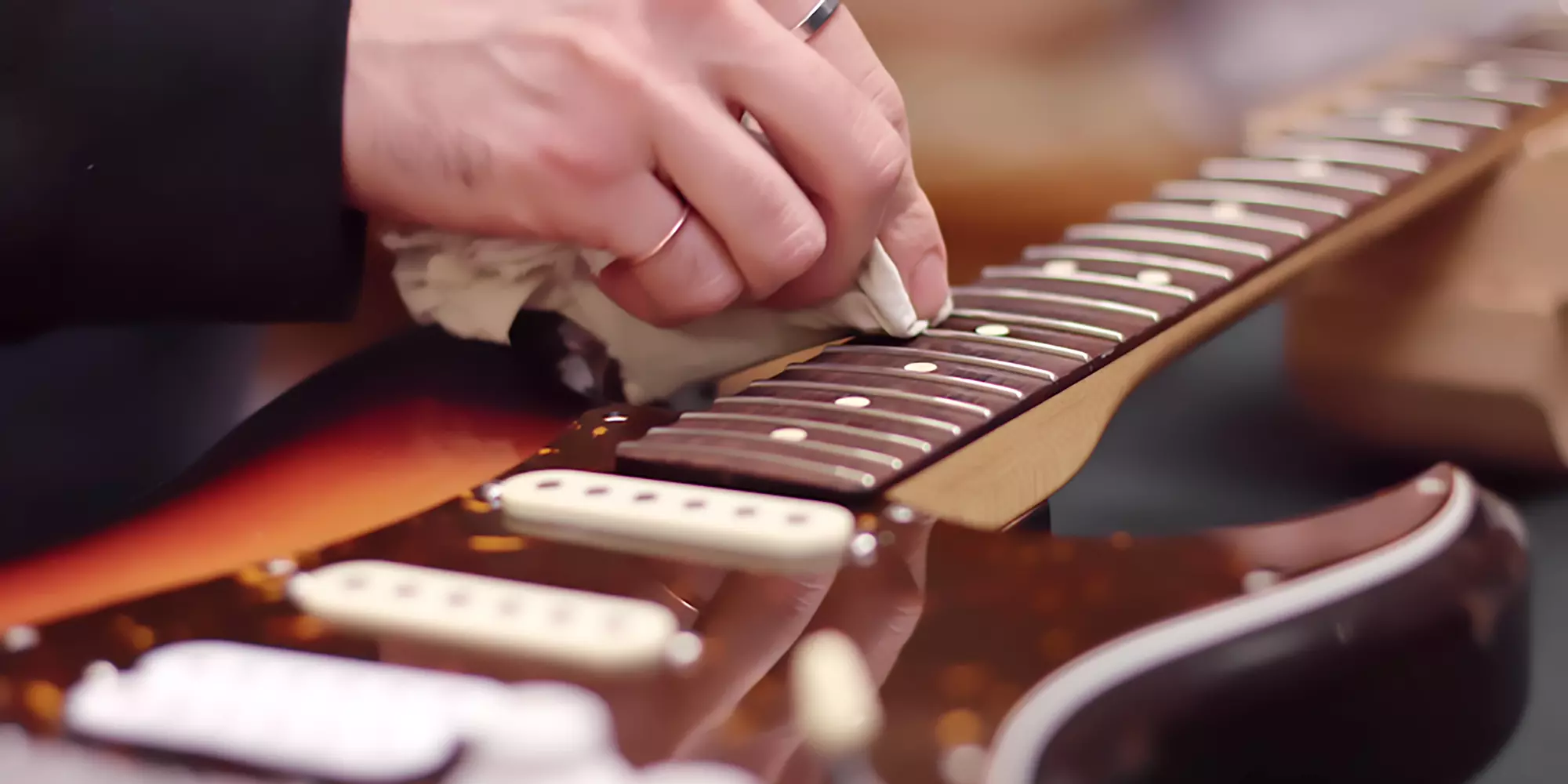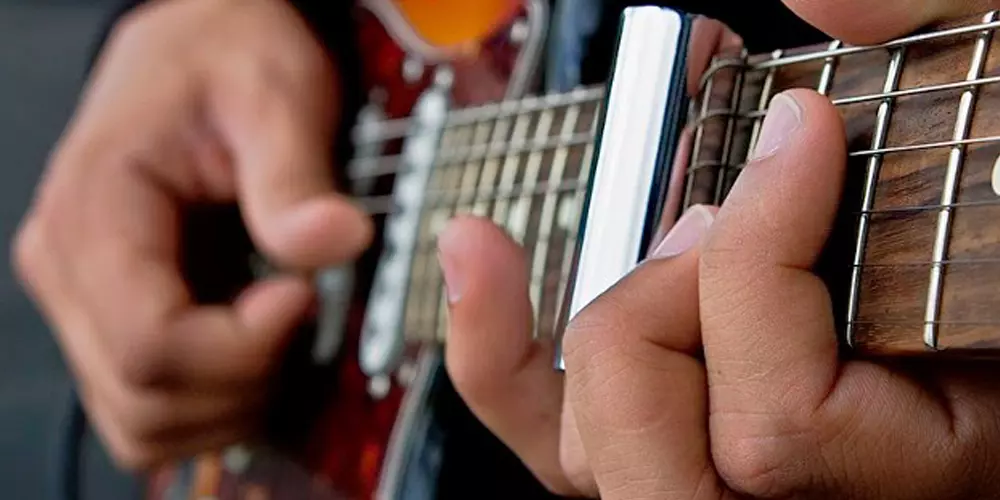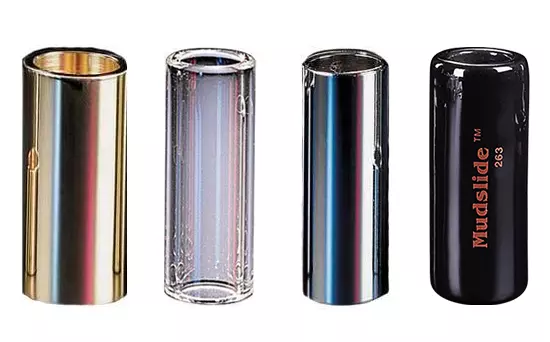Getting Started on Slide Guitar
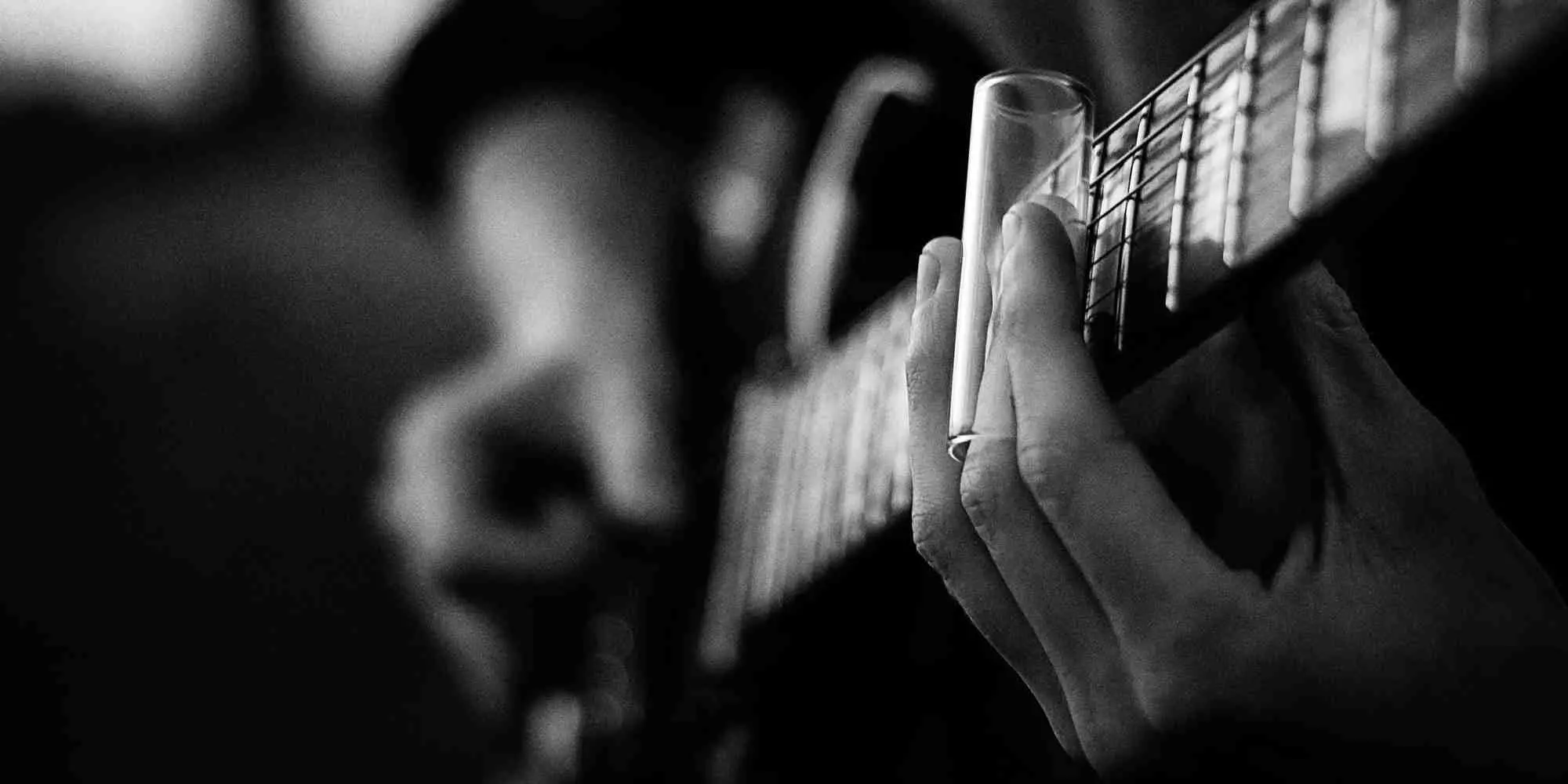
It’s a high lonesome sound that shivers and quivers, swoops and soars. Stars who’ve fallen under its spell and tried their hand include Eric Clapton, Bonnie Raitt, Johnny Winter and George Harrison. It’s Ron Wood’s trademark as he lights up the Rolling Stones.
The first question my students ask is, “What kind of slide should I get?” The answer reveals one of the charms of slide -- anything goes! Bob Dylan, according to liner notes on his debut album, borrowed his girlfriend’s lipstick holder to play slide on “In My Time of Dying.” Jimi Hendrix used his cigarette lighter for the slide part on “All Along the Watchtower.” Mance Lipscomb was memorialized on a YouTube video using a pocket knife to play “Jack of Diamonds.”
Early blues aces practiced something called “bottlenecking.” They literally played with the broken-off neck of a bottle. Important safety note: if you go that route, the mouth of the bottle slips over the finger. The jagged end points out.
Slide traces at least back to Joseph Kekuku, a Hawaiian who invented steel guitar in 1885. One day he got the crazy idea of playing his guitar with a railroad spike. The resulting “Hawaiian” guitar craze swept the state and then the nation, and in turn inspired the early blues artists to experiment with various objects including medicine bottles and lug wrenches.
Playing with broken bottles is probably not safe, and stealing railroad spikes might trouble your conscience. Luckily, commercially available slides abound and are more user friendly. Long & McQuade stores carry slides made of brass, chrome steel, glass and porcelain. My favourite is brass, but some folks swear by glass. However, if you practice in a basement with a cement floor and you tend to drop things, glass might not be for you.
Check out slides available at Long & McQuade here!
The next question is -- which finger? Slide can be placed on any finger. Bonnie Raitt uses her middle finger. But the majority of slide masters, like Johnny Winter, use the pinkie. Eric Clapton can be seen using his pinkie on the “Unplugged” and “Sessions for Robert Johnson” videos. The advantage is that three fingers are free and together on the other side of the slide to mix in chords and non-slide notes.
Sound is produced differently with slide. Instead of fingering slightly ahead of the fret like in regular guitaring, you center the slide directly above the fret. Also, you use a lot less pressure. Pick as hard as you want, but fret lightly. Don’t press the string down to touch the wood. Some guitarists use inserts to raise the strings so there’s less chance of making contact. Dobros and steel guitars have higher action for that reason.
Some guitarists keep guitars just for slide with strings high over the fretboard. However, with a light enough touch, you can make slide work on any guitar. One of the all-time slide greats, Robert Johnson, used a regular guitar.
The first thing you’ll notice (with slide) is how much extra noise you make -- buzzing, humming, rattling sounds you don’t want. The real challenge is to produce a clean sound.
A few tips:
1. Don’t slam the slide onto the guitar. Lower it so gently that you barely hear the slide hit the string(s).
2. Keep the pressure smooth and even while sliding. Only with regular practice will you consistently ring out like or Ry Cooder or Elmore James.
3. After your slide riffs, sometimes you’ll need to lightly mute the strings with your picking hand to avoid the buzzy sound of the slide departing.
Mastering a clean sound won’t happen overnight. Oatmeal and messaging may be instant, but learning this skill isn’t. However, with persistence, you’ll one day dazzle your fans.
A frequent question is whether slide requires open tuning. You can play slide in any tuning, including standard.
But here’s why many slide players prefer open tunings. Let’s say you use open G - one Clapton uses often. The strings go, from 6 to 1 -- DGDGBD -- all notes from the G chord. Strum all of the open strings and you’re playing the G chord without even trying. If you place your slide across all the strings on fret 5, then you’ve got a C chord.
Do the same at 7 and you’ve got D. Fret 12 is G again. In other words, the major chords are all shaped like your slide - a straight line. Makes it easy to navigate through the changes.
But if you’re new at this, here’s an easy slide riff in regular tuning. Strum string 3 and 4 open. Place the slide on fret 3. Strum the 3rd and 4th strings, then smoothly slide to fret 5. Mute with your picking hand. Then put the slide on fret 3 and strum the 3rd and 4th strings again. Then play those same two strings open. That’s it. You might have to do it about twenty times before it’s smooth. But then you’ll recognize one of the all-time popular blues riffs. Hopefully that’s all the encouragement you need to give slide some further study and start channeling your inner Muddy Waters.
Check out our other informative blog about slide guitars: Slide Guitars: What types are there and what defines them?
* * *
Mike Allen teaches guitar, harmonica, bass, banjo and mandolin at the Burlington Long & McQuade lesson centre. He performs as a singer/guitarist and his album, Big Money Meltdown, is available on iTunes and Spotify.

